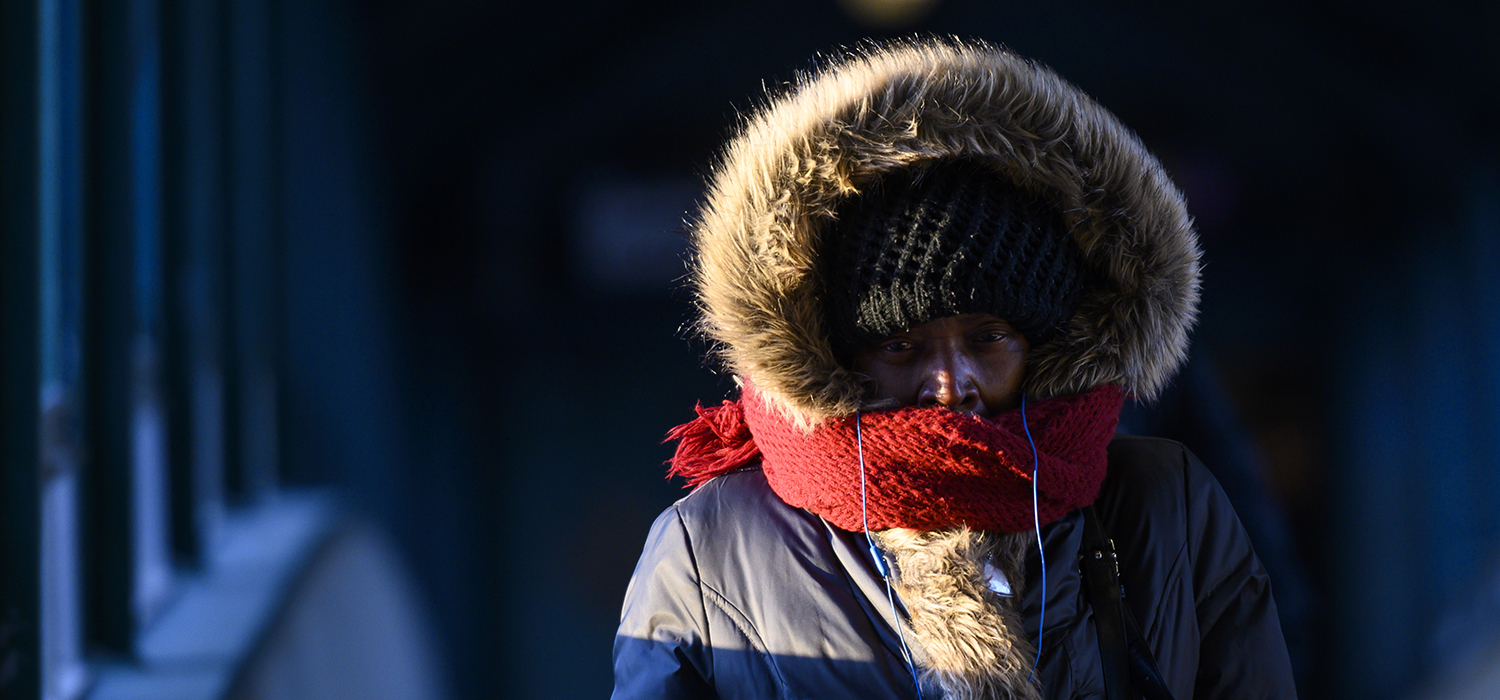
<p>A woman walks on a pedestrian bridge on January 31, 2019 in New York City. A brutal cold wave brought temperatures in the US Midwest lower than those in Antarctica, grounding flights, closing schools and businesses, and raising fears of hypothermia. (Photo by JOHANNES EISELE/AFP via Getty Images).</p>
When Congress passed the 2018 Farm Bill almost one year ago, it chose to make minimal changes to the Supplemental Nutrition Assistance Program (SNAP), the nation’s largest food assistance program, which helps millions of low-income Americans purchase food. Over the past year, however, the United States Department of Agriculture (USDA) has proposed a series of regulatory changes that could significantly alter eligibility and benefits for millions of households.
The most recent of these proposed rules would change the way states consider utility costs, which can include winter heating bills, when determining household eligibility for SNAP benefits, as well as the monthly amount they receive. The proposed rule is open for public comment until December 2, 2019.
At first glance, the proposed modifications to SNAP’s standard utility allowance (SUA) might not seem like a significant policy change. States currently have flexibility in the data and methods used to set standard utility allowances when calculating expense deductions from a family’s gross income limit to determine SNAP benefits.
The proposed rule would standardize the methodology for calculating utility allowances, setting it at the USDA’s estimate of the 80th percentile for low-income households’ utility costs within the state, based on national survey data.
This standardization would reduce variation in SUAs across states, with some receiving a higher allowance and some receiving a lower allowance than before. A prior telephone expense allowance would be replaced with a telecommunications allowance, reflecting the cost of one telephone, basic internet service, or both.
Our new analysis suggests that the proposed changes to the SUA would primarily affect SNAP benefit amounts, with a relatively small effect on overall participation in SNAP. But the impact varies widely across states.
We estimate the following:
- Aggregate SNAP benefits would decrease in 29 states, with the biggest reductions in Vermont (21.6 percent), New York (11.1 percent), South Dakota (11.0 percent), and Maine (10.8 percent), all states with high winter heating bills. Overall, 12 states would experience benefit declines of more than 5 percent.
- Benefits would increase modestly in 21 states (mostly southern) and the District of Columbia. Mississippi would receive the highest increase in total benefits (4.9 percent), followed by Alabama (3.4 percent) and Arizona (3.2 percent). Overall, however, there would be a national reduction of $786 million (1.5 percent) spent on benefits.
- Households with an elderly member or a member with a disability would be the most likely to be affected by the proposed change to the standard utility allowance. The proposed change would reduce benefits for one in four households with a member with a disability, with an average reduction of $36 per month. Twenty-two percent of elderly households would experience an average benefit reduction of $38 per month.
But focusing only on each proposed rule as it is released obscures a larger potential effect that has been unfolding during 2019. The cumulative impact of three major proposed rule changes this year is also a critical piece of context.
In addition to the changes in the SUA, the administration has proposed changes to state flexibility in administering SNAP eligibility rules, known as broad-based categorical eligibility (PDF), and to the ability of states to apply for waivers from strict time limits and work requirements for people considered able-bodied adults without dependents.
Taken together, if implemented as proposed, we estimate the following:
- SNAP participation and benefits would be reduced in most states, with the number of participants dropping by more than 15 percent in 13 states, including California, Connecticut, Delaware, the District of Columbia, Illinois, Michigan, Nevada, Oregon, Pennsylvania, Rhode Island, Vermont, Washington, and Wisconsin. The highest reductions in SNAP participation would be in the District of Columbia (24.0 percent) and Nevada (22.0 percent).
- Northeastern states would see large reductions. Among the states with the largest reductions in total benefit amounts are Vermont (28.6 percent), Connecticut (18.0 percent), Rhode Island (17.4 percent), and New York (17.2 percent).
- Households containing elderly members, persons with disabilities, and able-bodied adults without dependents would be most likely to be affected by the policy changes. Nevertheless, more than 500,000 households with children would lose eligibility, and 1.1 million would receive a smaller benefit. Our new analysis does not take into account the potential impact on school meals, which we discussed in a brief released last month.
None of the rules are finalized yet. But if implemented, the administration’s proposed package of SNAP rules during 2019 will significantly alter the program, which has a proven track record of reducing both poverty and food insecurity.
Let’s build a future where everyone, everywhere has the opportunity and power to thrive
Urban is more determined than ever to partner with changemakers to unlock opportunities that give people across the country a fair shot at reaching their fullest potential. Invest in Urban to power this type of work.